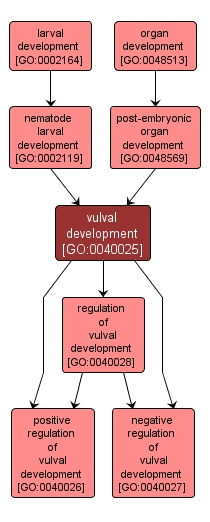| Desc: |
The process whose specific outcome is the progression of the egg-laying organ of female and hermaphrodite nematodes over time, from its formation to the mature structure. In nematodes, the vulva is formed from ventral epidermal cells during larval stages to give rise to a fully formed vulva in the adult. |














